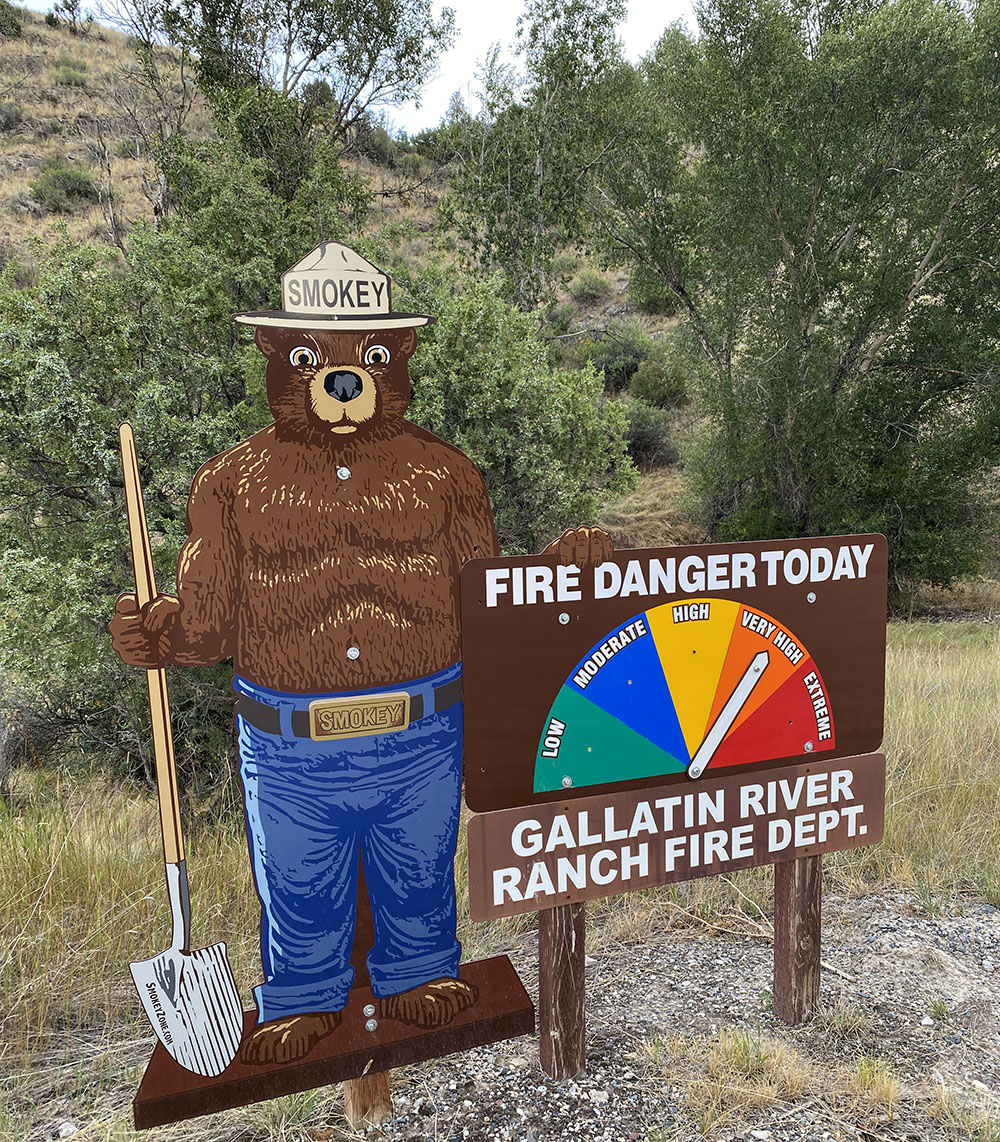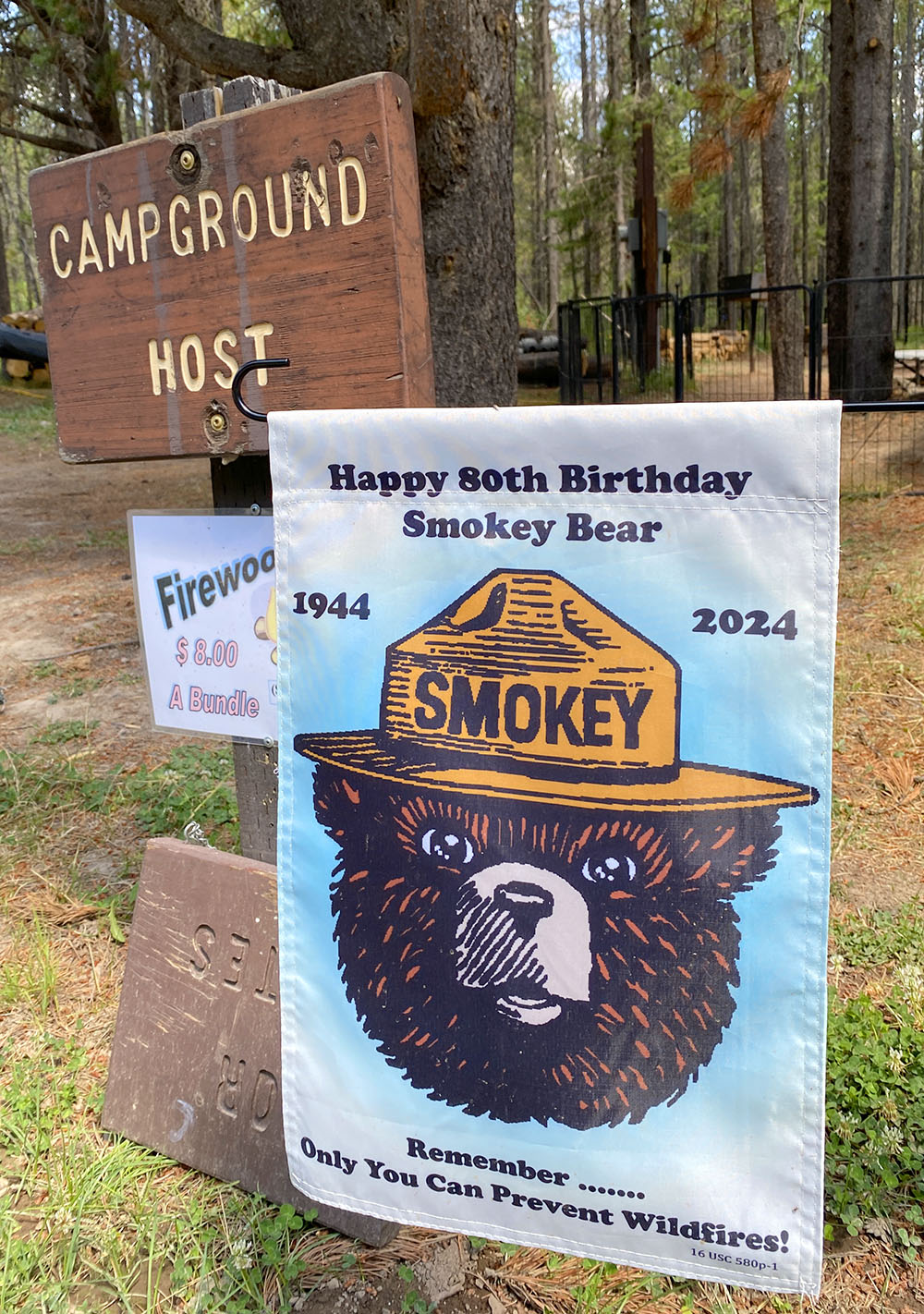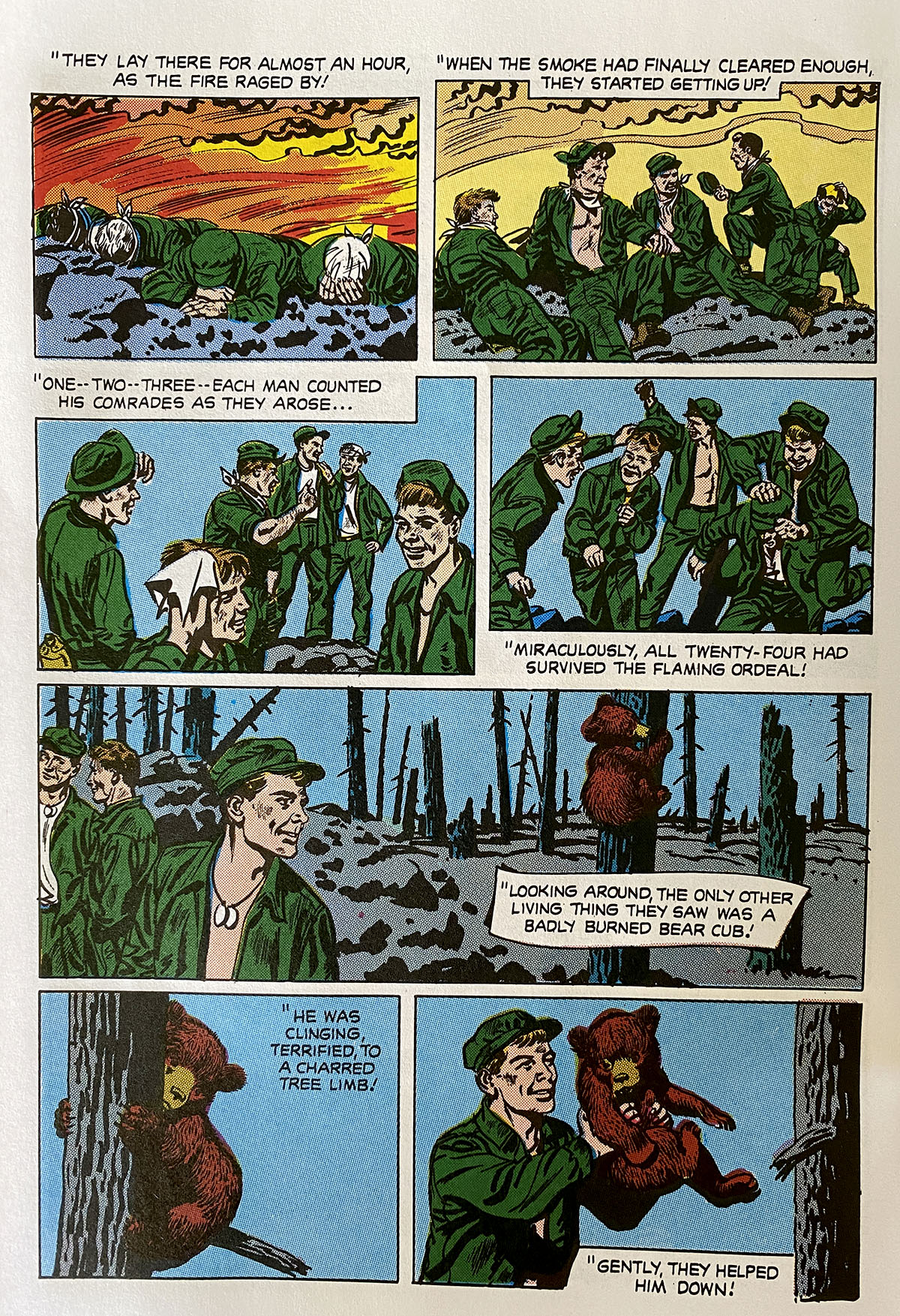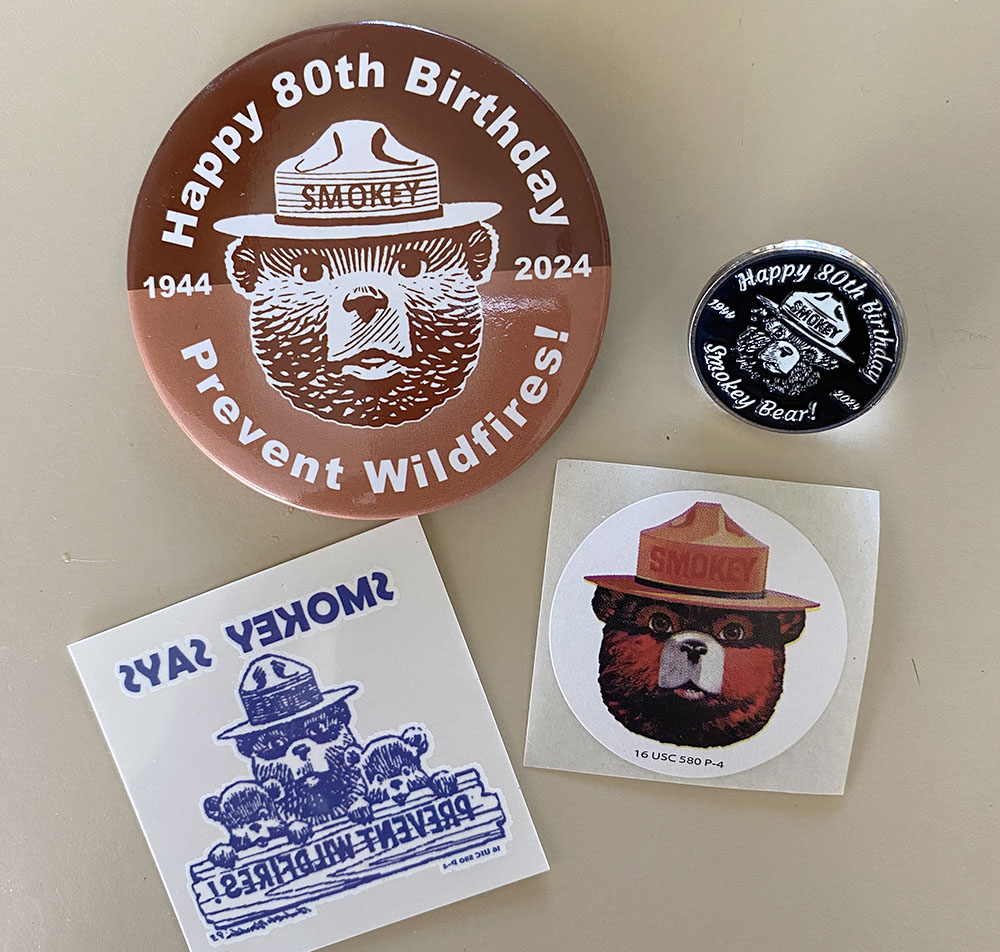Who are Les Phryges, Germain the Lynx, Smokey Bear, KC Wolf, Serge the Rabbit, Bison Futé, and Bibendum?

They are all mascots. “A mascot is any human, animal, or object thought to bring luck, or anything used to represent a group with a common public identity, such as a school, sports team, society, military unit, or brand name. Mascots are also used as fictional, representatives spokespeople for consumer products.” Wikipedia
Germain is part of the PSG soccer team, KC Wolf of the Kansas City Chiefs NFL team. Serge is the RATP character and Bison tells us the French traffic report. Bibendum, better known as the Michelin Man, is perhaps the most widely known and the oldest mascot. Les Phryges – you’ve seen them a lot lately. But the only one who was real is the American firefighter Smokey Bear. Smokey celebrated his 80th birthday in 2024.

The bear first appeared on a wildfire prevention poster in August of 1944, but it was the introduction of a live bear with a compelling story that catapulted Smokey into the nation’s consciousness. Here’s the real Smokey Bear’s story.
In 1950 in the Capitan Mountains of New Mexico, a wildfire raged. As a crew attempted to contain the blaze, they saw a lone bear cub wandering nearby. Soon, about 30 firefighters were caught directly in the path of the fire storm. They survived by lying face down on a rockslide for over an hour as the fire burned past them.

Page from the comic book of Smokey’s life
However, the little cub did not fare as well. He had taken refuge in a tree that was completely charred. He was alive but with badly burned paws and hind legs. The crew removed the cub from the tree, and Ray Bell, a rancher among the crew, took him home and helped get him medical attention.
News about the little bear spread swiftly. Soon, the press agencies broadcast his story nationwide, and many people wrote and called, asking about the cub’s recovery. The state game warden wrote to the chief of the Forest Service, offering to present the cub to the agency as long as the cub would be dedicated to a conservation and wildfire prevention publicity program. The cub was soon on his way to the Smithsonian’s National Zoo in Washington, D.C., becoming the living symbol of Smokey Bear.
Smokey received numerous gifts of honey and so many letters he had his own zip code! He remained at the zoo until his death in 1976. Then he was returned to his home to be buried at the Smokey Bear Historical Park in Capitan, New Mexico, where he continues to be a wildfire prevention legend.
« Remember, Only you can prevent wildfires »
was Smokey Bear ’s catchphrase
The Smokey Bear Wildfire Prevention campaign is the longest-running public service advertising campaign in U.S. history. Wildfire prevention (also forest management, because some fire is beneficial) is more than ever a critical issue affecting the United States and numerous other countries. Smokey’s message, educating generations of Americans (today’s kids love him as much as yesterday’s) about their role in preventing wildfires, is as relevant and urgent today as it was in 1944.

Smokey Bear 80th birthday goodies
Extra tidbits:
In 1952, Steve Nelson and Jack Rollins wrote a song about Smokey. To maintain the rhythm of the song, they added “the” between “Smokey” and “Bear.” Due to the song’s popularity, Smokey Bear has been called “Smokey the Bear” by many fans, but, in actuality, his name never changed. He’s really just Smokey Bear.
The Smokey Bear Award is the highest of honor in wildfire prevention and increases public recognition and awareness of the ongoing need for wildfire prevention efforts. Famous entities like Lassie, Walt Disney Productions, the Romper Room show, the San Diego Padres (a baseball team with “Swinging Friar” as their mascot), and many workaday individuals and groups have all been awarded the Smokey Bear Award. The very first, presented by 1957 by President Eisenhower in 1957, was to Judy Bell who as a young girl helped nurse the bear cub back to health.
There’s a Smokey Bear balloon in the Macy’s Thanksgiving Day and Rose Bowl parades. And Friends of Smokey Bear balloon (just his head) often see at hot air balloon festivals.

